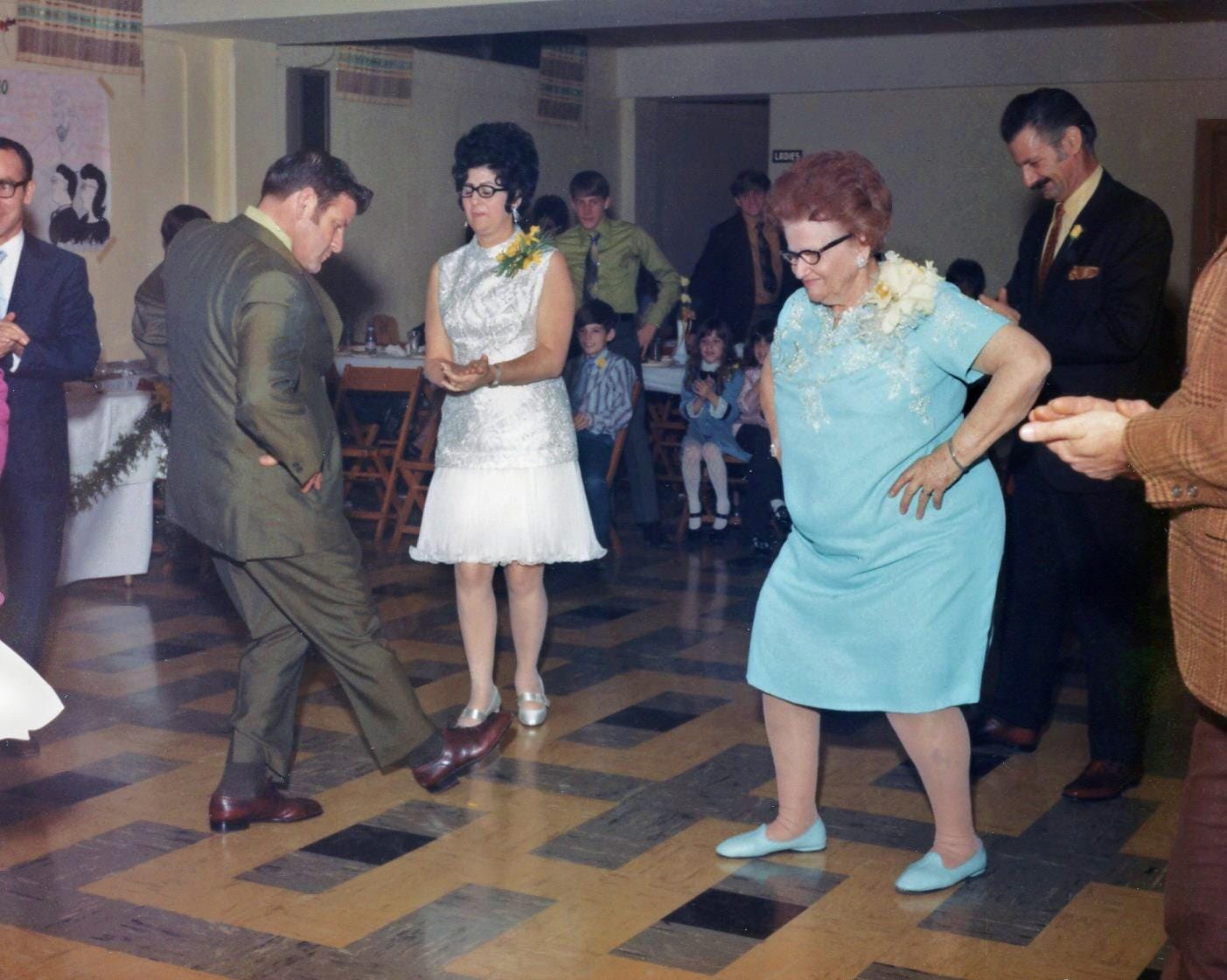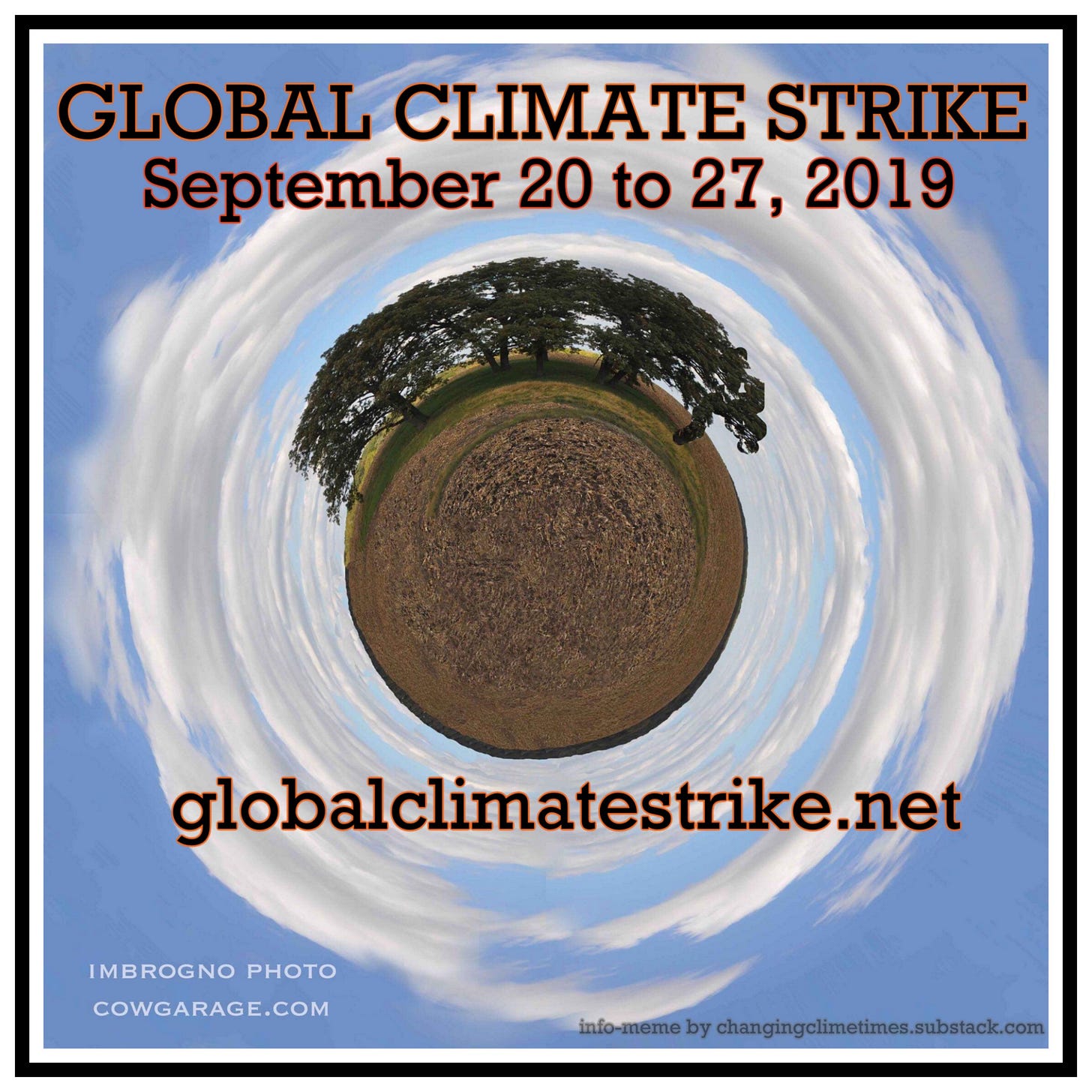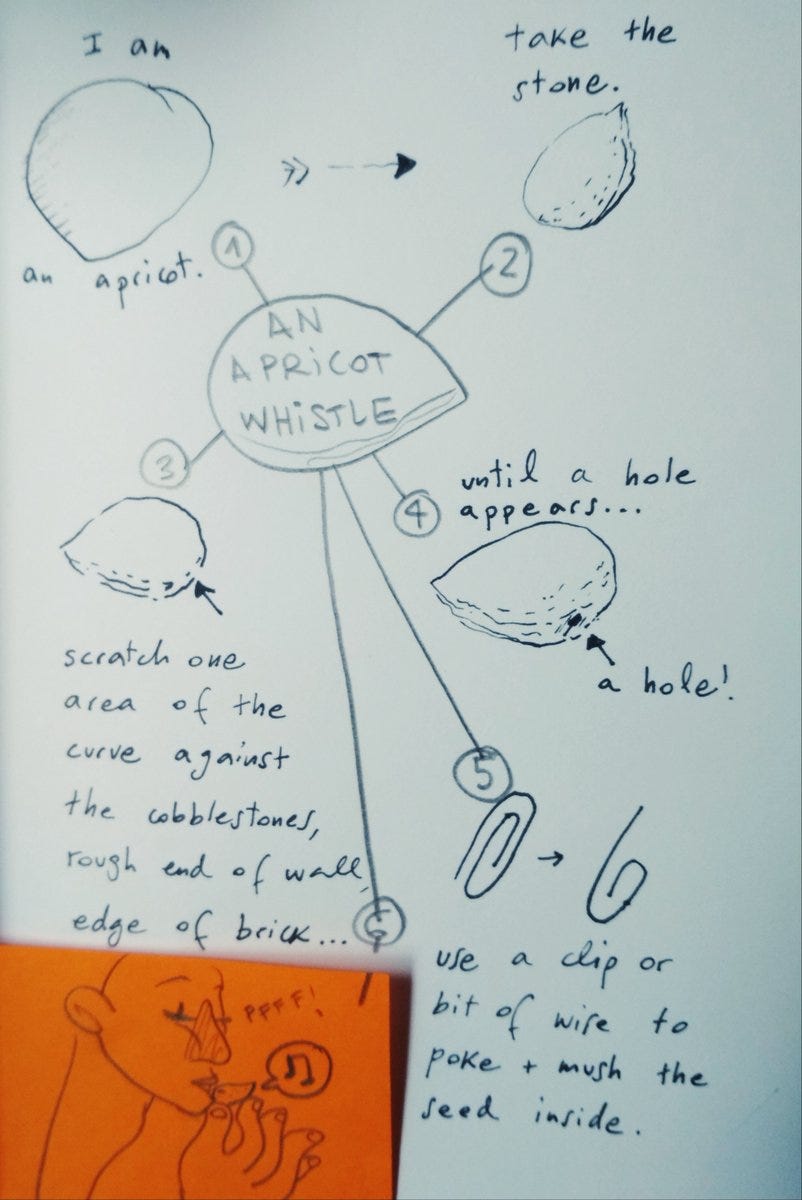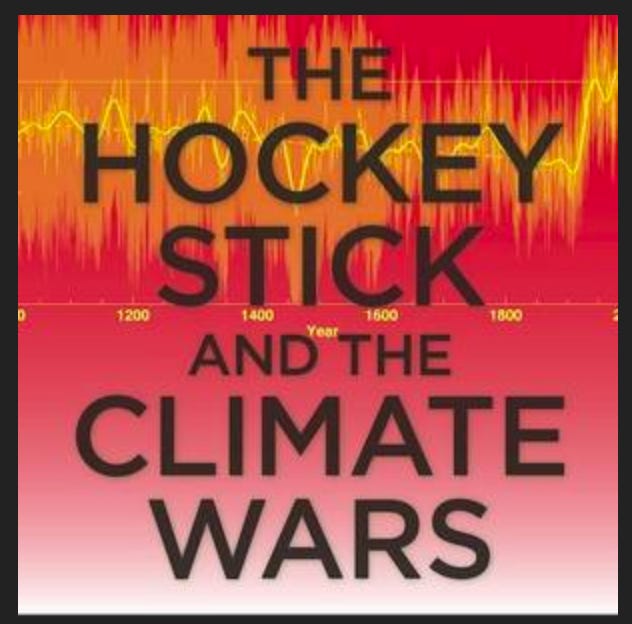QUICK/READ: What world do you hope to save from the devastating impacts of climate change? Changing Climate Times posted that question to Twitter a while back. We got answers from an Irish artist, an online climate denial warrior and iconic climatologist Michael E. Mann, among others. Me, I’m trying to save the kick-up-your-heels world shown in the photo below. Not to mention pawpaw ice cream from seeds once shat out by a wooly mammoth. For all the answers we got, listen to podcast 3, issue 21 of Changing Climate Times. Or read the transcript below, if that’s more your thing. If this issue was forwarded to you, subscribe to the newsletter & podcast at: changingclimatetimes.substack.com | Subscribe to the podcast on iTunes and wherever you listen to podcasts. | Follow us on Twitter at @TimesClimate
Be well. | CCT Curator, Concierge and Host Douglas John Imbrogno | PS: Thanks to Kyle Vass for his primo podcast coaching!

ONE | Introductions Are in Order

I am trying to save a world in which my Italian grandmother dances the Tarantella with her youngest son at her 50th wedding anniversary at the American Slovak Club in Lorain, Ohio.
Like a lot of journalists these days, I got washed out of a job last year. My editor handed me a white envelope in the newsroom to let me know my 30 year news career was kaput. I was a feature writer and editor for that newspaper for a long time.
One of the ways I've spent my time—lots of time—since being laid off is publishing a free climate change newsletter and companion podcast called The ChangingClimateTimes.
Free as in, like, no-money-at-all free.
Every day, I scour world media and social media for the latest news and views on the unfolding climate crisis. I offer my commentary or that of climate scientists, activists and communicators.
I try to steer a course—as the newsletter's pitch puts it—"between the dire news and what to do.” I also add homemade climate memes and climate-themed cartoons to spice the mix.

Going from straight feature writing to advocacy has been a real change-up for me.
At my old newspaper, I’m still (in)famous for writing the paper’s longest-ever feature. More than 100 inches! It concerned the—I will still argue—fascinating history of the ancient pawpaw tree and its custardy fruit, “How the Pawpaw Was Found, Got Lost, and Was Found Again.”
(Don’t get me started. Did you know old-timers hung roadkill in pawpaw branches since their flowers are pollinated by flies and…)
What’s do pawpaws and flies have to do with this climate crisis?

TWO | Count to One Million

Image from 11/27/18 New York Times article “The Insect Apocalypse Is Here.”
Maybe you’ve heard about the recent United Nations report. It stated one million species are at risk in decades ahead from an overheated Earth.
That number would likely include pawpaw trees and their delicious banana-mango-flavored fruit. And that list of one million species? Probably the average fly, too. The pawpaw fruit is born from flies pollinating the flowers. And flies are in the cross-hairs of the ‘insect apocalypse,' a pretty scary phrase that refers to the collapse of insect populations from a climate going haywire.
Last year, the New York Times ran an article, “The Insect Apocalypse Is Here. What Does It Mean for the Rest of Life on Earth?”
An insect apocalypse. The effects of this apocalypse are noticeable in our own backyards, as we sit on our porches gazing into the dark and wondering “Where did all the fireflies go?”
As the conservation site firefly.org notes:
“Fireflies are disappearing from marshes, fields and forests all over the country—and all over the world. And if it continues, fireflies may fade forever, leaving our summer nights a little darker and less magical.”
Pause a second to absorb that United Nations report number: 1,000,000, in all its zeroes. That is a pretty impressive screw-up by one species—to do to so many other species.
If, that is, we can somehow transform our eat-the-Earth global economy.
If.
“If” is the linchpin in all climate crisis discourse.
If — we can toss out climate change denying and delaying politicians who don’t seem to give a damn about the future of this world. Or give a damn, it even seems for their own children and grandchildren.
If — we can claw back power from the coal-fired, petroleum-addict “petro-states,” small and large. Like Saudi Arabia. The United States. Venezuela. China. The Soviet Union. List your country here…

THREE | Strike Now!

A global climate strike is coming to planet Earth Sept. 20 to 27, 2019
Then, you get to petro-states’ partners in climate crime: the King Midas-rich 'fossil fuel-industrial complex.’
Frontline climate scientist Michael E. Mann calls this industry the wealthiest, most powerful one in human history. It holds the fate of the planet and humanity in its smudged and oily hands.
The fossil fuel industrial complex wants you to be impressed by the millions of dollars they have spent showcasing their ‘commitment’ to renewable energy.
Instead, focus on the bottom-line billions, earned weekly by this industry. They’re on a CO2-fueled, permafrost-melting, extreme-weather intensifying bender.
If any of this news sounds shocking to you—it’s shocking to me, even after 21 issues of Changing Climate Times—then it might be time to hit the streets for the planet-wide global climate strike coming the week of Sept. 20 to 27, 2019.
Greta Thunberg’s solo school strike (the one that began in Stockholm, Sweden in late 2018) has inspired global youth climate strikers to take action.
Let’s join them—mark the week of September 20 to 27 on your calendars— There are more than 150 countries where youth strikes now take place every Friday. Plan a local action where you live at globalclimatestrike.net.
Strike now, you might say.
While the planet is hot.

FOUR | Pawpaws and Mamaws

Pawpaws eaten today may have originated from wooly mammoth poop. | Photo: Indiana Public Media
Recently, I posed a question on the @TimesClimate timeline with the hashtag #ClimateTwitter. Why do this work of climate science? Of climate activism? Of climate communication?
Why do it, given the long odds of transforming the fossil fuel industry?
I, mean, really. At an intensely personal level.
Why do you do it?
It’s a lot of work. Even for weekend warrior climate communicators like myself. For the high-profile, full-time climate science professionals and activists, it comes with no small amount of grief.
For Greta Thunberg, her grief isn’t just watching the planet she loves turn to an actual hell (complete with fire and brimstone). Greta is routinely portrayed as a pawn of avaricious parents. Climate change deniers pan her as a pawn to some economy-destroying, socialist cadre of United Nations globalism.
High-profile—heck, even medium- and low-profile climate figures—face powerful pushback from fossil fuel industry minions and climate science deniers This pushback includes death threats and character assassination. Climate scientist Katherine Hayhoe, who hosts the popular “Global Weirding” podcast, says she has been likened to “the handmaiden of the Antichrist.”
So, here’s the question I tweeted to the #climatechange cognoscenti:
Dear #climatetwitter: What world are you trying to save with your climate work?
To start off my list of the world I was trying to save, I posted to Twitter a photo of my Calabrian-born Italian grandmother, shot decades ago at the American Slovak Club in Lorain, Ohio. She was a dear, oversize woman—a big waddling lovable penguin who always wanted to put some meat on my skinny bones.
The photos shows her in a blue dress, kicking up her heels as she dances the Italian Tarantella beside her youngest son, who is also kicking up his heels in a suit and tie.
I wrote in my Twitter post:
I want to preserve a world where my Italian Grandma Catherine dances the Tarantella with her sons at her 50th wedding anniversary.
But let’s go back, way back. Before my Grandma Catherine’s birth on a steep southern Italian hillside.
Did you KNOW the pawpaw is so old that 50 million years ago giant North American sloths, wooly mammoths, and saber-toothed tigers ate pawpaws. Then, they shat pawpaw seeds far and wide across what we now call America, establishing future pawpaw patches?
So, I also fight to preserve a world where you can buy a pawpaw ice cream cone, made from local West Virginia pawpaws at Ellen’s Homemade Ice Cream shop in downtown Charleston, W.Va.
From wooly mammoth to a crisp waffle cone.
Now, that’s a world worth saving.
(Like I said, don’t get me started on pawpaws.)

FIVE | ‘Climate Is Killing Us Already’

Artist Elida Malques wants to be able to make whistles with apricot stones for every Spring to come. | Image by Elida Malques
Other answers rolled in on Twitter.
As a 2017 Guardian commentary once noted: “From Africa to the US to Haiti, climate change is a race issue,” among other things:
“Climate change and the extreme weather events it produces disproportionately affects black and poor communities,” that commentary noted.
So, a response came in from the Twitter account Tamara To’L . Tamara Toles O’Laughlin describes herself as an analyst and environmental “advocate for people and planet.” She responded with a happy family photo of a smiling kid and two adult women.
She added an often missing perspective of how climate change is already walloping the non-powerful and non-wealthy. As she wrote:
“I’m trying my best to lift up the diaspora of the black community. Climate is killing us already, taking the little we have, swallowing our homes, hope and land, it’s a multiplier that breaks and separates our families in ways set and served up by the status quo.”
Another response came from the Twitter account ‘Elidasaur.’ Elida Malques is a visual artist and teacher based in Bray, Ireland. What world was she trying to save?
She answered:
“I want to be able to make whistles with apricot stones, every Spring to come. “
Whoa, wait!
‘How do you do make a whistle from an apricot pit?’ I asked back.
Being an artist, she answered with the illustrated guide above. PS: I dearly hope someone will add her apricot pit whistle-making instructions to the Wikipedia entry for apricot.

SIX | ‘Happy kids and unbroken adults’
A Twitter climate change warrior friend named Peter, who runs the Twitter account ‘Peter Believes in Science Not Dogma,’ answered the question.
Peter’s account toils at the front-lines of climate science denialists on Twitter. He spends endless hours refuting and engaging with this denialists. Peter patiently goes mano-a-mano with deniers. May the gods bless him. He flags bots and hopeless trolls. He tries to engage with the engageable.
Peter is not a climate scientist, but a private citizen. According to one of Peter’s tweets, he decided in 2018 “to stop watching trolls attack climate science and DO something about it.”
“I can only relate my own personal experience defending science against trolls as well as educating the public,” he writes. “I'm not paid to spend my time on social media in any way, nor do I make any money here.”
But Peter’s response to ‘What world are you trying to save?’ had nothing to do with climate science denial:
“The world I grew up in is one of happy illusions, but it's still a good one. We NEED a world of happy kids and whole, unbroken adults. I want to help CREATE a world where everyone is able to reach their potential, and to do so without curtailing that of others—a tall order.”
Two responses to the question were more melancholic.
A French woman responded from the Twitter account @arraigneedusoir:
I want to preserve a world where desert islands hide treasures, not abandoned cities or traces of people and animals long gone.
A response arrived from Byron Williston, whose Twitter account announces: “Philosophy professor, climate ethicist, Gaia-smitten extinction rebel. Egregious stupidity blocked.”
His response was more tough-love maudlin. He name-checked Cormac McCarthy’s 2006 Pulitzer Prize-winning, post-apocalyptic novel, “The Road”:
I’d be happy if the whole bloody thing doesn’t just become The Road. Low expectations.

EIGHT | Save the Leaping Dolphins

Michael E. Mann is determined to have his family and descendants be able to return and again marvel at the natural wonders of the Floria Keys.
Climate scientist Michael E. Mann responded to my tweet. He posted an excerpt from the epilogue to his 2013 book, “The Hockey Stick and the Climate Wars: Dispatches From the Front Lines.”
The book details the relentless, bare-knuckled attacks on the early work on climate change by Mann and fellow scientists. Their research produced the famous “hockey stick graphic.” The graphic earned a global audience with a 2001 U.N. report on climate change.
The graphic revealed how fast our planet’s temperature has risen in contemporary times, compared to the stable climate of the past 1,000 years.
The hockey stick graphic became an iconic climate change image. As one writer put it, the “hockey stick” was not just scientific data made shockingly clear. But an “implied threat to those who oppose governmental regulation and other restraints to protect the environment and planet.”
But Mann did not post graphics or data in response to my question: What world are you trying to save with your climate work?
He sent along a poignant excerpt from the epilogue to “The Hockey Stick and the Climate Wars,” about a visit with his young daughter to the Florida Keys. Here is the excerpt in full:
My four-year-old daughter was entranced by the Keys—the mangrove forests, the sonorous birds, the leaping dolphins, the coral reefs with their exotic and colorful fish. It was unlike anything she had ever seen. In fact, three generations of my family—my parents, my wife and me, and our daughter—were all sharing this mutual opportunity to enjoy one of Earth’s true wonders—and authentic key lime pie. I didn’t have the heart to tell our daughter that this island paradise was under assault—by us. That the warming and increasingly acidic ocean was slowly killing the reefs, that increasingly destructive hurricanes would subject them to further insult, and that projected sea level rise over the next few decades under “business as usual” emissions would literally submerge vast regions of the Florida Keys, including the wildlife refuges home to so many of its unique species. Nor do I have the heart to tell her now that the majestic scene of giraffes and elephants looming in the foreground of Ernest Hemingway’s “Snows of Kilimanjaro” may soon become a casualty of our warming of the planet.
I am determined to do whatever I can to make sure that it will be possible for us to return decades from now—my wife and me, our daughter, her children, and perhaps theirs—to again marvel at these natural wonders. While slowly slipping away, that future is still within the realm of possibility. It is a matter of what path we choose to follow. I hope that my fellow scientists—and concerned individuals everywhere—will join me in the effort to make sure we follow the right one.

NINE | What World Do You Hope to Save?
If you’d like to respond to the question, I’ll post the best answers in a future edition of Changing Climate Times newsletter. So ponder this: What world are you trying to save?
Respond in the comments below or at changingclimatetimes.substack.com or to douglasjohnmartin AT icloud.com.
If this issue was forwarded to you, subscribe to the newsletter & podcast at: changingclimatetimes.substack.com | Subscribe to the podcast on iTunes and wherever you listen to podcasts. | Follow us on Twitter at @TimesClimate
Be well.
CCT Curator, Concierge and Host Douglas John Imbrogno | PS: Thanks to Kyle Vass for his primo podcast coaching!







Share this post